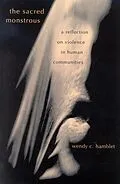Wedding an analysis of relevant anthropological literature and philosophical theory, this important book re-positions violence-long trivialized by philosophers as an incidental or anomalous feature of humanity-as a central concern for ethical thought. Wendy Hamblet focuses on a fundamental paradox that emerges when well-meaning communities and individuals attempt to implement their ideals in our social, or socialized, world. Very often the unintended consequences of these individual or communal ideals run headlong into the brute fact of bloody human engagement. Through her investigation of violence-legitimization in myth and ancient tales, philosophical accounts (from Plato to Nietzsche), the concept of home as 'refuge,' and recent social scientific data, Hamblet takes up the charge that violence is steeped in our being-it pervades human history and is embedded in the ethos of our modern institutions-and gives us essential tools for better understanding how violence actually operates.
Autorentext
By Wendy C. Hamblet
Zusammenfassung
In The Sacred Monstrous author Wendy Hamblet traces the historical and social fact of violence through the work of Girard, Bloch, Lorenz and Burket. She takes up the charge advanced by social theorists, anthropologists and others that violence is steeped in our being; it pervades our generations and is imbedded in the ethos of our modern institutions. Hamblet's discussion of human history re-frames our understanding of how violence works in history and society. The Sacred Monstrous is a salient work of continentally informed philosophy that contributes significantly to any discussion of violence and conflict in the social sciences.
Inhalt
Chapter 1 Preface: apologia
Chapter 2 Ritual and Mythical Beginnings
Chapter 3 Ritual In-form-ations: the anthropologists' theories
Chapter 4 Resonances in Ritual Theory
Chapter 5 Mythical Traces of the Legacy of Violence: under the shadow of the "fall"
Chapter 6 Home-Craft in the History of Philosophy: "innocent egoist and alone"
Chapter 7 The Ambiguities of Home: "a phenomenology of identity-construction"
Chapter 8 Violence as Community: the suffocating embrace of the home
Chapter 9 Superstructures of Identity
Chapter 10 In the Wake of Violent Rituals
